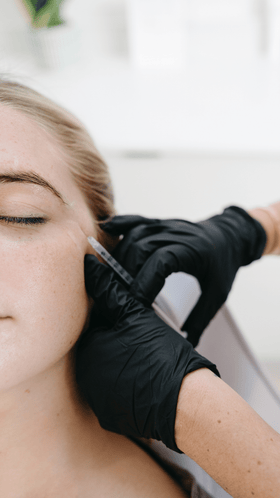
Which Exfoliating Acid is Right for Me?
If you haven’t yet stepped into the brave new world that is chemical exfoliation, don’t worry. It might sound intimidating but the fact is, every skincare product that you use - in fact, pretty much everything that exists - is made up of different chemicals. This includes acid, which is quickly becoming the holy grail ingredient for skin exfoliation.
While you might not love the idea of applying acid topically to your face, it’s important to note that, in many cases, using an exfoliating acid is far more gentle than applying a scrub or exfoliating tool, and so causes less irritation and damage to your skin’s surface. An exfoliating acid can also penetrate much deeper beneath the surface of the skin, helping to remove the build up of dead skin and unclog pores.

Are you on board yet?
The main key types of exfoliating acids are AHAs (alphahydroxy acids) and BHAs (betahydroxy acids). We’ll explore the two different types of acids further below.
AHAs
Common AHAs used in skincare products include glycolic acid, lactic acid, and citric acid.
AHAs are water-soluble, which means that they don’t penetrate as deeply beneath the skin’s surface as a BHA. Because of this, AHAs are best used for exfoliating the surface of the skin, helping to reduce pigmentation and even out skin tone.
It’s important to avoid overloading your skincare with active ingredients, as this can damage your skin’s natural barrier and lead to irritation and dryness. For example, avoid the use of actives like vitamin C and retinol on the same day that you apply AHAs. It’s also crucial not to overuse AHAs, as this, too, can damage your skin barrier.
BHAs
The most common BHA used in skincare products is salicylic acid.
BHAs are oil-soluble acids, meaning that they sink into your pores and help to flush out the dead skin cells and build up of excess sebum that leads to spots and blemishes on the surface of the skin. These products are often safe to use daily, unlike AHAs.
Due to the BHA acids’ propensity for working deep beneath the skin, products containing BHAs are the best option for oilier or acne-prone skin types, as they can help to clear out pores and prevent blemishes.
Which is Best?
Overall, determining which exfoliating acid is best for you depends on the results that you’re looking for.
If you have normal to combination skin and are seeking surface-level rejuvenation and increased skin cell turnover, AHAs are likely to be the best exfoliating acids for you.
On the other hand, if your skin needs a deep, thorough exfoliation to help flush out pores and slough away dull skin, an acid containing a BHA acid is more suitable. Similarly, if you have an oilier skin type or skin that is acne-prone, BHAs are a brilliant addition to your skincare arsenal.
If you’re new to experimenting with exfoliating acids, we’d suggest initially using a product with a low percentage of acids two or three times a week to test how your skin will react. If you don’t experience any negative effects, such as skin irritation, you can continue to experiment by increasing the percentage until you begin to see the desired results.
Finally, make sure that you remember to use SPF as part of your daily skincare routine - as using chemical exfoliants can make your skin more prone to damage from UV rays, such as sunburn.
Products We Recommend;
For Sensitive Skin; Medik8 Press & Glow, €28. 00
For Oily or Acne Prone Skin; Obagi BHA CLENZIderm FoamingCleanser, €55.00
Dr. Laura Favourite for Smooth Skin; Obagi Exfoderm, €125.00
Stronger option from Obagi AHA glycolic acid 8% Exfoderm Forte, €125.00
Favourite Multitasker - Obagi C Exfoliating Day Lotion, (AHA glycolic acid and vitamin C makes this a one stop shop in the am)

Are you ready to learn more? Find out more about how to achieve radiant, healthy skin by booking a personalised consultation with Dr Laura Clinic today!




